50+ SAMPLE Discovery Plan
-
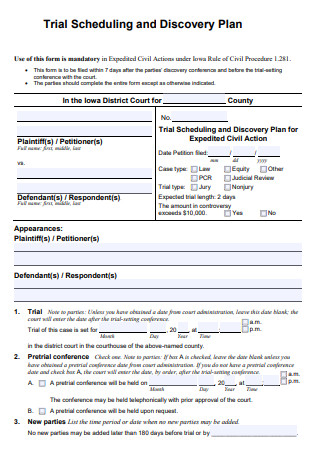
Trial Scheduling Discovery Plan
download now -
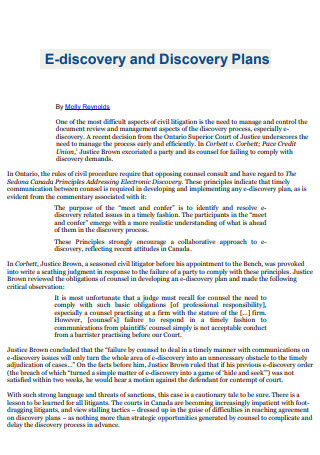
E-discovery and Discovery Plans
download now -
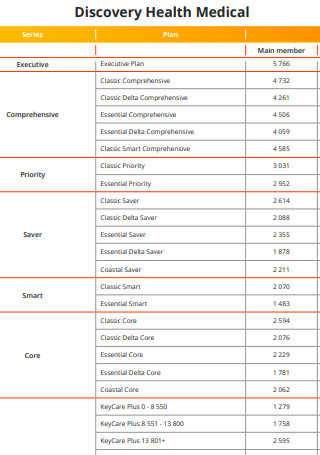
Discovery Health Plan
download now -
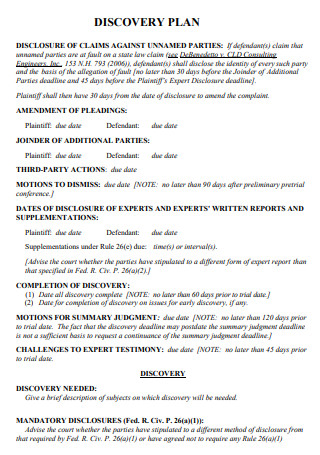
Discovery Plan
download now -
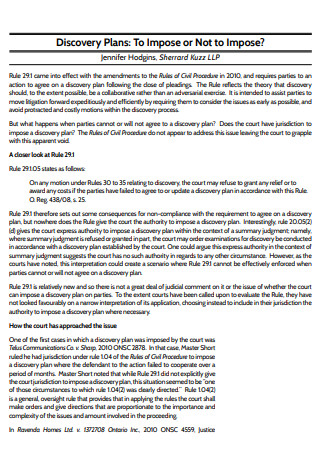
Discovery Plan To Impose
download now -
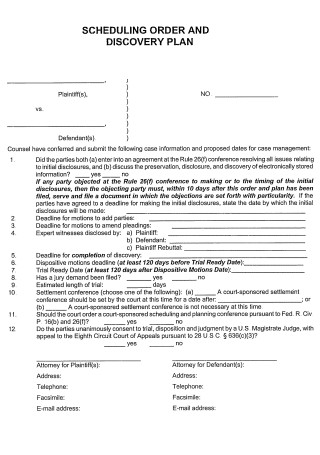
Scheduling Order Discovery Plan
download now -
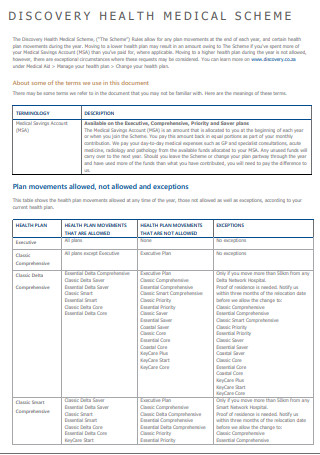
Discovery Medical Plan
download now -
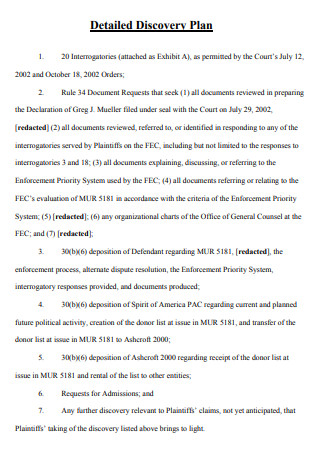
Detailed Discovery Plan
download now -
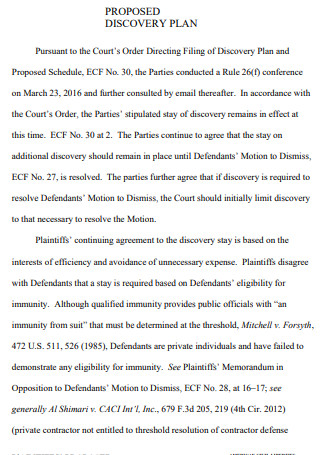
Proposed Discovery Plan
download now -
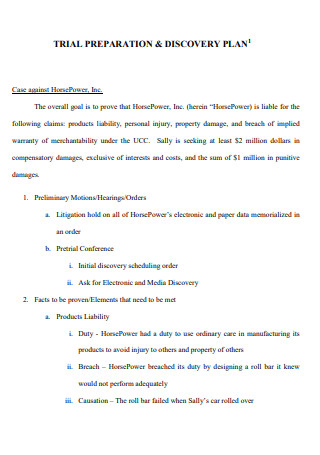
Preparation And Discovery Plan
download now -
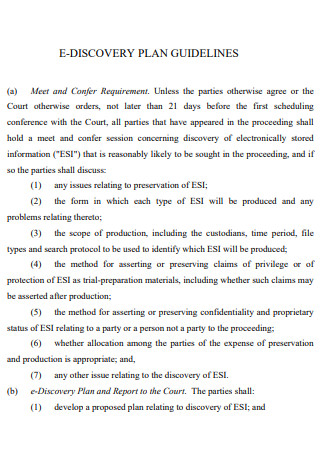
E-Discovery Plan Guidelines
download now -
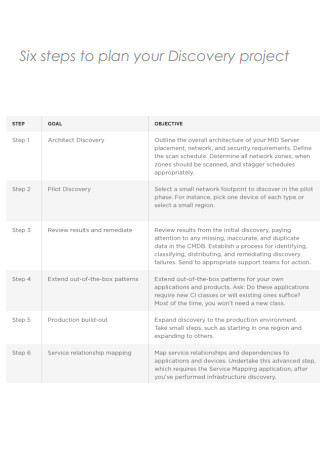
Discovery Project Plan
download now -
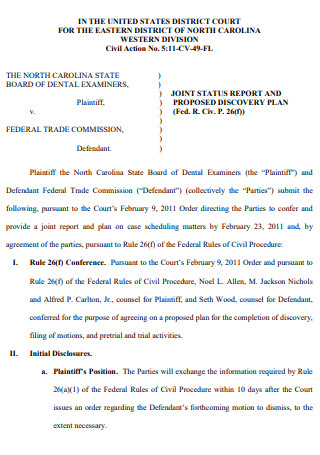
Joint Status Discovery Plan
download now -
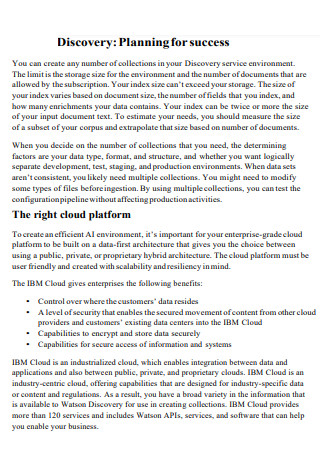
Discovery Plan for Success
download now -
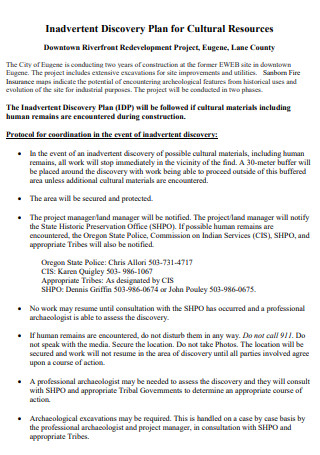
Discovery Plan for Cultural Resources
download now -
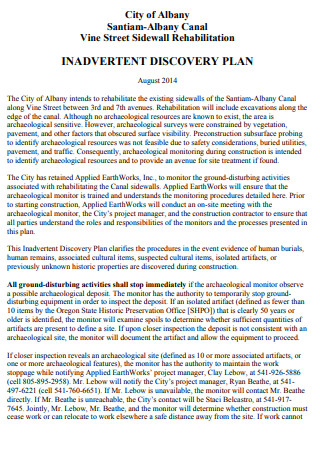
Inadvertent Discovery Plan
download now -
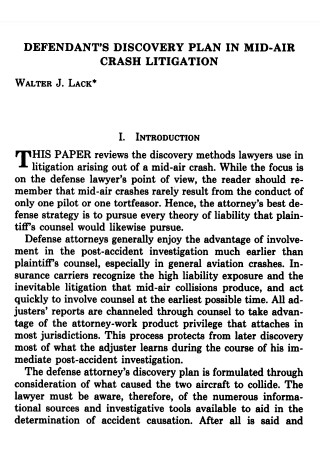
Defendant’s Discovery Plan
download now -
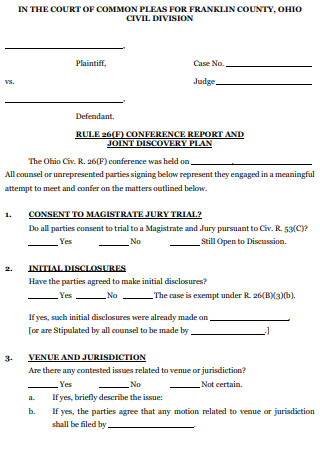
Conference Report And Discovery Plan
download now -
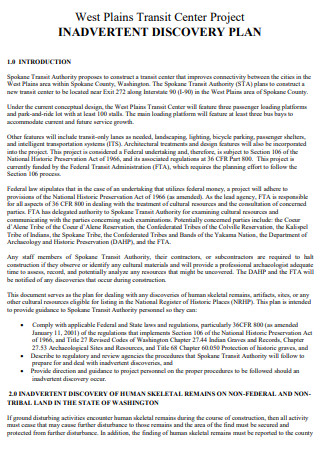
Inadvertent Project Discovery Plan
download now -
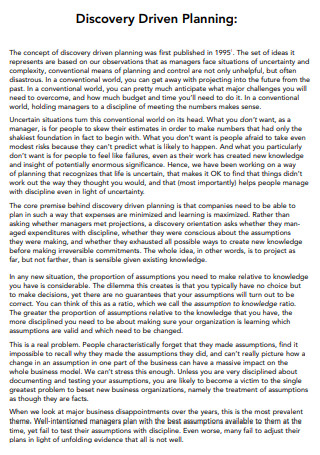
Discovery Driven Planning
download now -
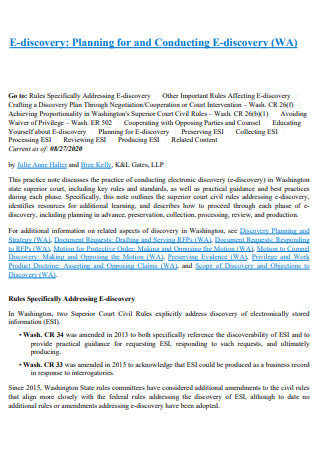
Conducting E-Discovery Plan
download now -
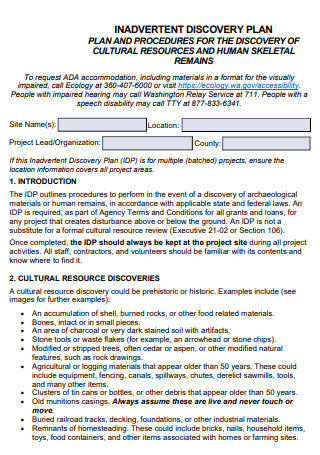
Discovery Plan And Procedure
download now -
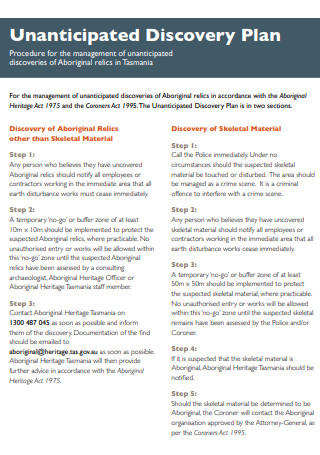
Unanticipated Discovery Plan
download now -
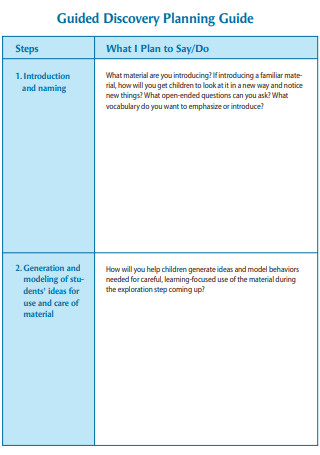
Guided Discovery Planning Guide
download now -
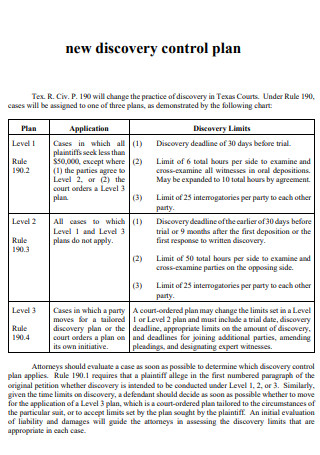
Discovery Control Plan
download now -
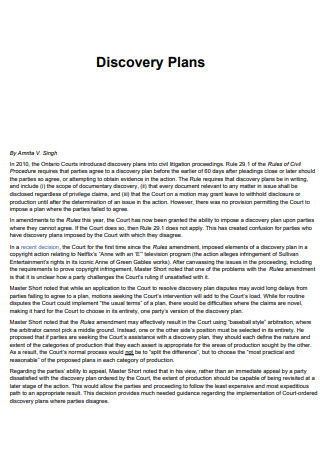
Sample Discovery Plan
download now -
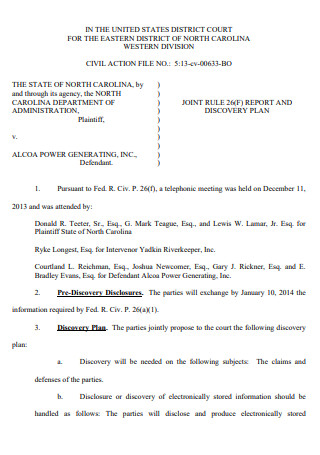
Report And Discovery Plan
download now -
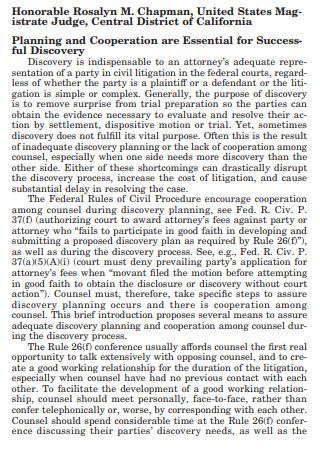
Successful Discovery Plan
download now -

Electronic Discovery Action Plan
download now -
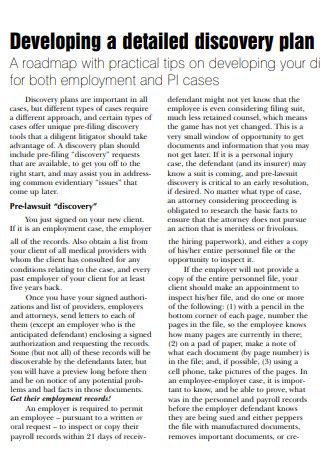
Developing a Detailed Discovery Plan
download now -
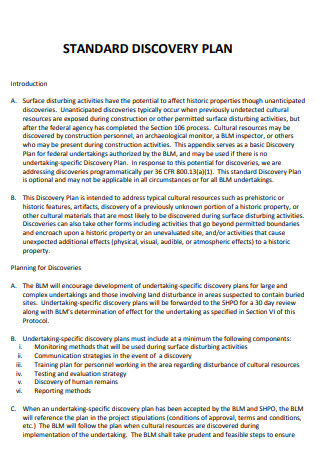
Standard Discovery Plan
download now -
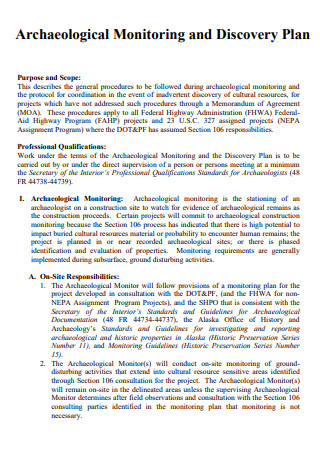
Archaeological Monitoring and Discovery Plan
download now -
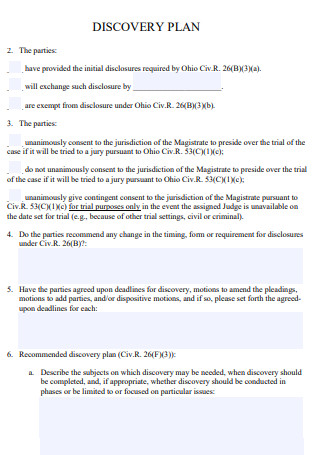
Simple Discovery Plan
download now -
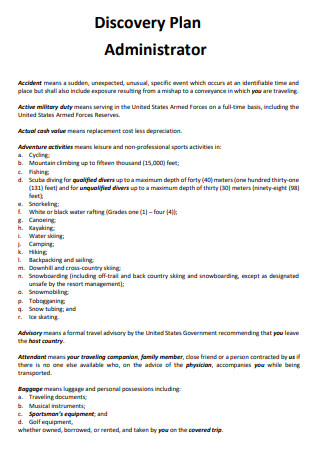
Administrator Discovery Plan
download now -
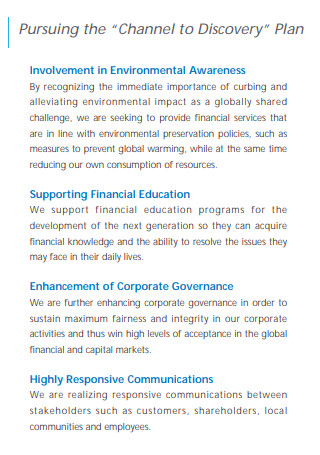
Pursuing Channel to Discovery Plan
download now -
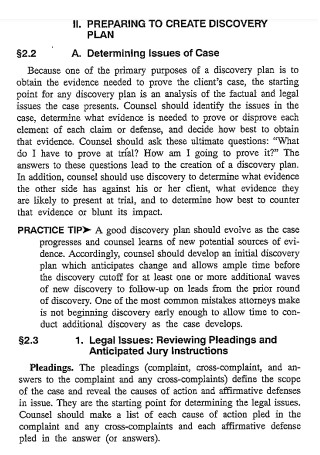
Creating Discovery Plan
download now -

Wind Project Discovery Plan
download now -
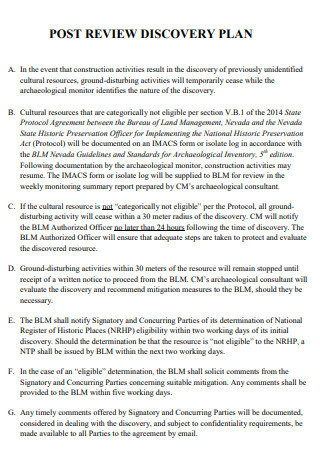
Post Review Discovery Plan
download now -
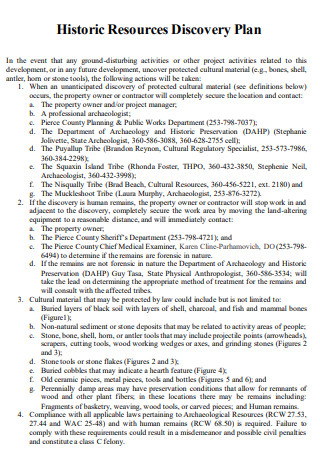
Historic Resources Discovery Plan
download now -
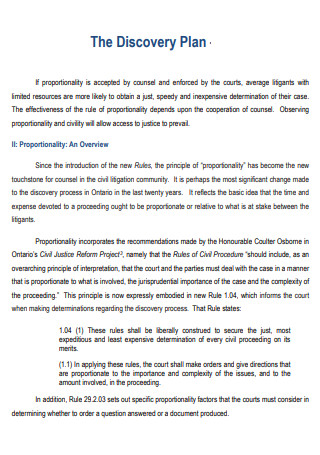
The Discovery Plan
download now -

High River Discovery Plan
download now -

Trial Preparation & Discovery Plan
download now -

Comprehensive Client Discovery Plan
download now -
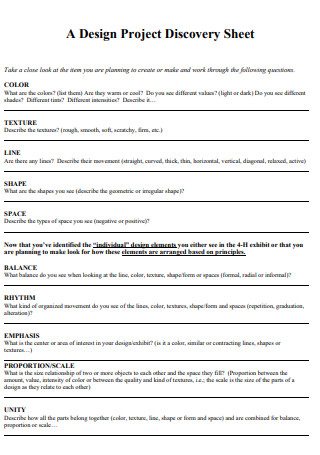
Project Discovery Plan Sheet
download now -
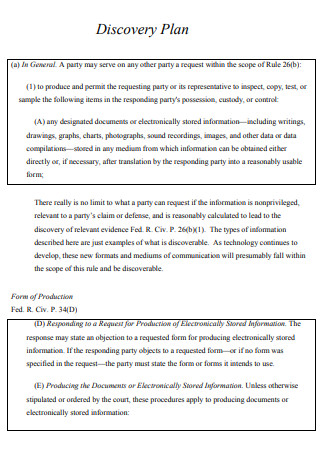
Judicial Discovery Plan
download now -
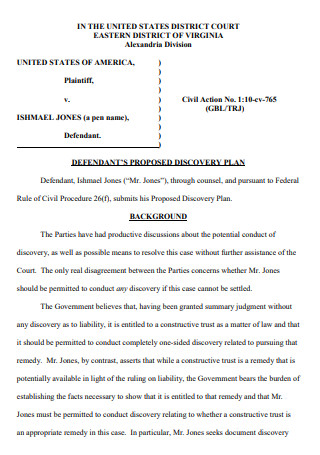
Defendants Proposed Discovery Plan
download now -
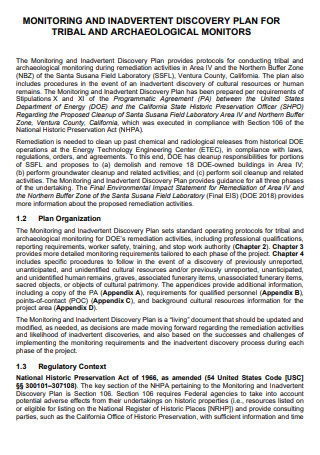
Discovery Plan For Tribal
download now -
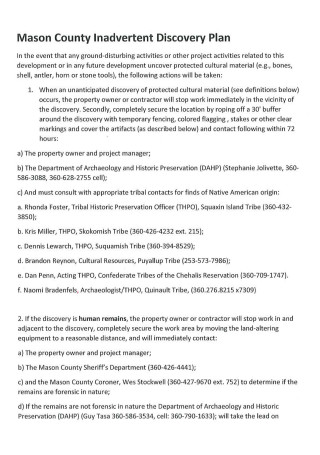
Discovery Plan Example
download now -
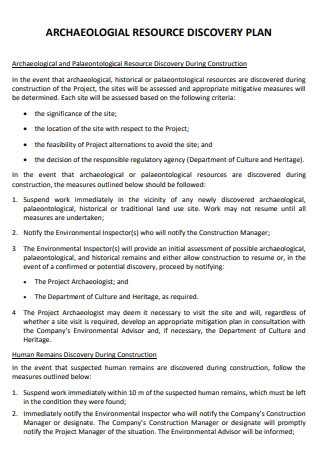
Archaeological Resource Discovery Plan
download now -
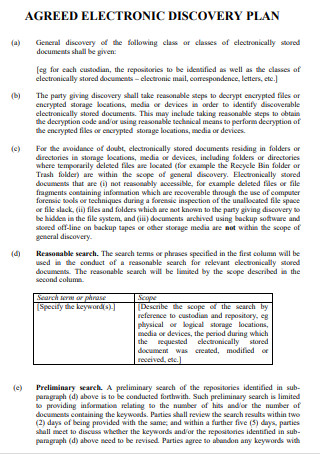
Agreed Electronic Discovery Plan
download now -
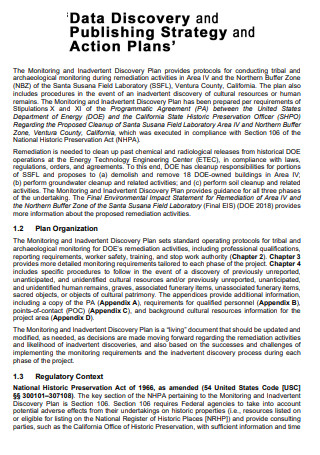
Data Discovery Action Plan
download now
FREE Discovery Plan s to Download
50+ SAMPLE Discovery Plan
What Is a Discovery Plan?
Benefits of a Discovery Plan
Essential Members of the Discovery Planning Team
How To Create a Discovery Plan
FAQs
What are the five basic delivery tools?
What is the purpose of a discovery plan?
What happens during the discovery stage?
What Is a Discovery Plan?
A discovery plan is a document that consists of a series of questions, with some businesses calling it a discovery script, that aims to support sales teams and sales representatives to identify the necessary information to make the right diagnosis and analysis report to propose a reasonable offer according to the needs of a client. It is a planned approach that organizations use to move the business forward with selling techniques in a lesser amount of time so it can implement and scale its sales as soon as possible. A well-structured discovery plan allows sales and marketing teams to gather all relevant information. Having this information guarantees a better and more refined sales pitch in the future. As such, sales representatives and sales teams need to utilize their resources to be as apprehensive as possible to identify probable solutions to potential problems. Discovery plans are a necessity in the sales process to produce the most suitable sales plans.
According to a Harvard Business Review article entitled Discovery-Driven Planning published in July to August 1995 in their magazine, the Walt Disney Company’s expansion in Europe in 1992 had cost them over 1 billion US dollars by the end of 1994. Polaroid lost over 200 million US dollars in its endeavor in the instant movie industry. The reason for these huge losses? Managers did not utilize innovative ventures in terms of the right planning and control tools.
Benefits of a Discovery Plan
Before getting into the production and manufacturing of products, businesses must take the initiative to use the discovery phase planning at their disposal and not see it as a waste of time. A discovery plan is an essential tool in the process of successful developments. Below are some of the benefits that organizations receive with the help of a discovery plan.
Essential Members of the Discovery Planning Team
A critical factor that influences the success of a product is the team that develops and participates actively in the discovery process. Different individuals like team managers and specialists comprise the discovery team, while the numbers depend on the goals and complexity of the project. Forming the discovery team must be unique to the client, according to the accuracy of provided documentation by the client and the expertise of each team member. Below are the possible team members with their roles and responsibilities.
How To Create a Discovery Plan
When writing a discovery plan for a project, make sure that every member of the discovery team cooperates and participates during meetings. There are various ways to implement the discovery planning process, especially if the creation of the team centers on the goals of a client. No matter the business or industry the team serves, below is a helpful guide that details a step-by-step process in handling the discovery plan.
-
1. Identify the Customer Context and Goals
Remember that customers and clients require solutions to meet their needs, known as customer problems. During the time that a prospective client reaches out to the company, it is more likely that they have completed various research studies into the possible solutions that they need to satisfy their problems immediately. The organization receives this information through the discovery plan. Knowing the context of the client in pursuing a solution to their problem allows the company to understand the root cause of their needs and their desire to reassess their priorities. As a company offering possible solutions, it is necessary to pinpoint what brought about the desire for change, the utilized action plans of the client, results, and their analysis of the current situation. It is advisable to use the FARP method, in which you gather facts, a record taken actions, obtain results, and present perception.
-
2. Understand the Customer Needs
Researching and identifying the needs of the customer helps the team to identify the changes or improvements they wish to implement. For the clients to have an easier way of deciding, it is ideal for the needs analysis of the discovery team and client to produce similar results. The discovery team must be able to understand what the clients want and need to achieve and understand the importance of their goals. Creating a comprehensive list helps sort their needs, prioritizing the most relevant items.
-
3. Uncovering the Purchase Motivations of the Client
Each client has their motivations when it comes to enforcing changes. The objective of the discovery team is to identify these, allowing the members to develop more creative and effective sales presentations and sales strategies. It is an essential step in the discovery planning process. The more information the team gathers on the motivations of the client, the sales proposal will follow their expectations. In terms of developing the discovery plan, taking notes is the best offense. It lets the client know that you are capable of involvement and professionalism, retrieving relevant bits of information. Most sales teams and discovery teams utilize a method that implements security, pride, novelty, comfort, money, and sympathy to its clients. Through this, sales representatives find quicker and more efficient ways to secure the trust of customers.
-
4. Formulate a Sales Pitch
Empathizing with customers is essential, and sales teams can use storytelling to their advantage. Most clients make their decisions based on similar experiences rather than the proposed solutions that a sales representative presents. It is the reason behind utilizing case studies. The customer feedback and testimonials demonstrate how the company offers its services to clients, helping them solve problems. Use storytelling as an approach and prepare account histories, review recent activities of past clients and contact persons, scan press articles and print journals, and use social media platforms to pinpoint similar contacts whenever necessary.
-
5. Organize the Following Steps
The purpose of creating a discovery plan is for the client to work their way through the funnel and secure the deal. If the sales representative is already positive about closing the deal, it must be in their best interest to summarize that the product or service the company offers is useful. There are two ways to secure an offer. The first one is hypothetical closing allows the sales team to express how they can be of assistance to move towards their company goals and meet challenges. The goal is to instill confidence in the interaction without overwhelming the client. The other option is the prospect buy-in closure, wherein the company invites the client to discuss their challenges and difficulties while asking them which proposed solution is best for their organization.
FAQs
What are the five basic delivery tools?
When it comes to discovery plans in legal matters, lawyers utilize various tools to help them gain significant facts and evidence about a case. The discovery devices that most lawyers use are deposition, interrogatories, admission requests, requests for production of documents, and inspection and e-discovery requests.
What is the purpose of a discovery plan?
In any field that utilizes a discovery plan, including private businesses, health care, and legal matters, the primary purpose is to obtain comprehensive information and knowledge on facts to solve potential problems and issues of the client.
What happens during the discovery stage?
In the discovery stage, sales representatives, lawyers, attorneys, and scientists start investigating cases and issues by gaining knowledge about the problem through gathering information from a client or other relevant sources.
A discovery plan is necessary for various industries that seek to solve the problems and issues of customers and clients. The discovery plan is critical to producing effective solutions and methods to matters concerning the client, and as much as possible must not be overlooked. Businesses and institutions that handle discovery plans must be efficient in their work, producing much-needed information. The article above contains a selection of discovery plans that various industries can use at their disposal. Download the 50+ SAMPLE Discovery Plan in PDF from Sample.net today.
